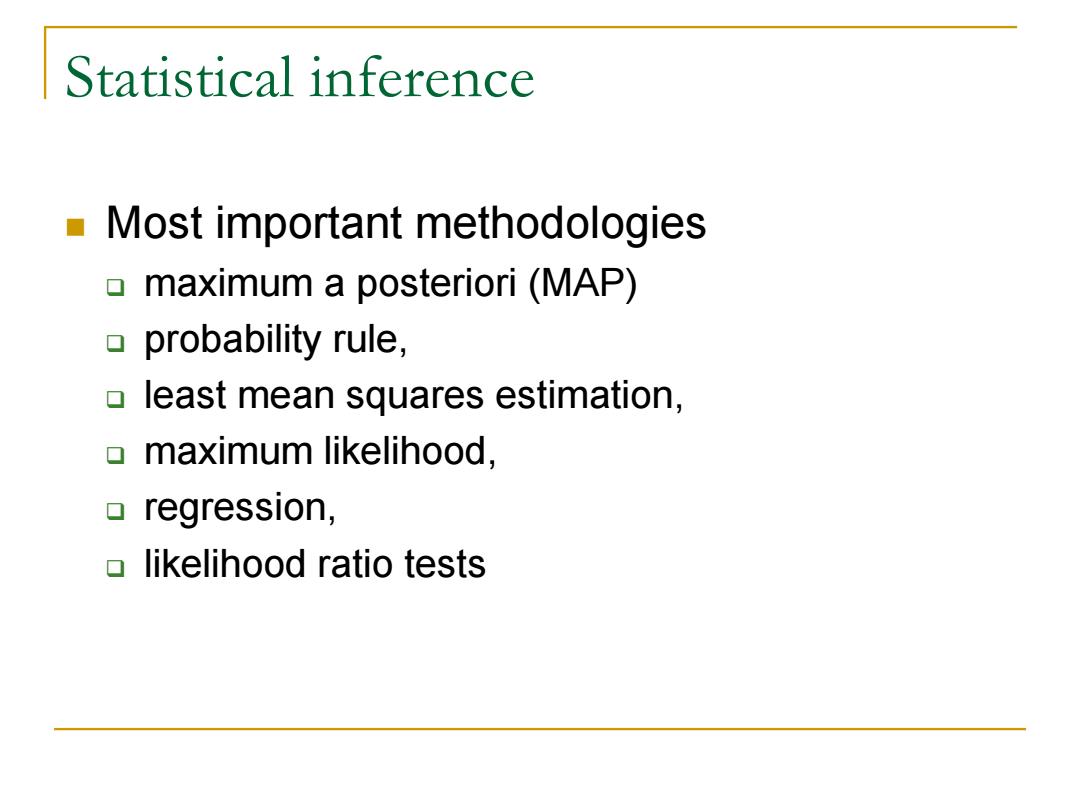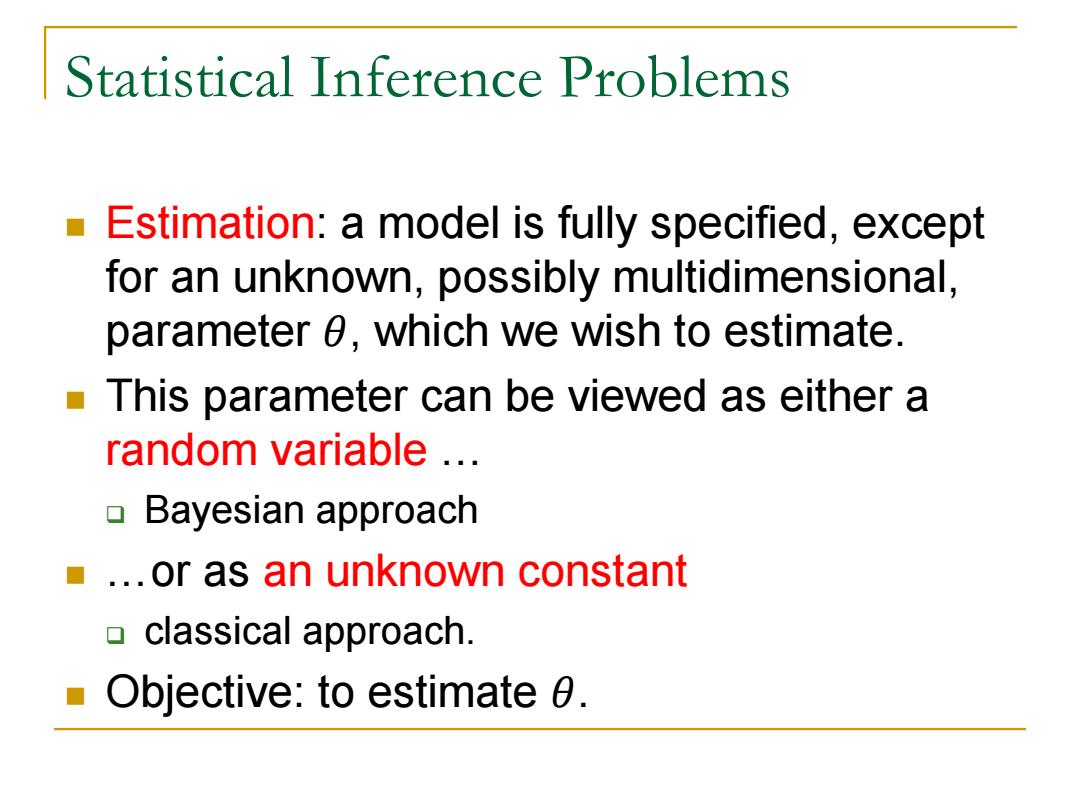
ENGG40Probatatisticsfoer Chapter 8 Bayesian Statistical Inference Instructor:Shengyu Zhang
Instructor: Shengyu Zhang

Statistical inference Statistical inference is the process of extracting information about an unknown variable or an unknown model from available data. Two main approaches Bayesian statistical inference 0 Classical statistical inference
Statistical inference Statistical inference is the process of extracting information about an unknown variable or an unknown model from available data. Two main approaches Bayesian statistical inference Classical statistical inference

Statistical inference Main categories of inference problems oparameter estimation hypothesis testing significance testing
Statistical inference Main categories of inference problems parameter estimation hypothesis testing significance testing

Statistical inference Most important methodologies ▣maximum a posteriori(MAP)) probability rule, o least mean squares estimation, omaximum likelihood. ▣regression, o likelihood ratio tests
Statistical inference Most important methodologies maximum a posteriori (MAP) probability rule, least mean squares estimation, maximum likelihood, regression, likelihood ratio tests

Bayesian versus Classical Statistics Two prominent schools of thought oBayesian Classical/frequentist. Difference:What's the nature of the unknown models or variables? Bayesian:they are treated as random variables with known distributions. ■ Classical/frequentist:they are treated as deterministic but unknown quantities
Bayesian versus Classical Statistics Two prominent schools of thought Bayesian Classical/frequentist. Difference: What’s the nature of the unknown models or variables? Bayesian: they are treated as random variables with known distributions. Classical/frequentist: they are treated as deterministic but unknown quantities

Bayesian When trying to infer the nature of an unknown model,it views the model as chosen randomly from a given model class. Introduce a random variable o that characterizes the model, Postulate a prior distribution pe(). ■ Given observed data x,one can use Bayes' rule to derive a posterior distribution pox(x). This captures all information that x can provide about 0
Bayesian When trying to infer the nature of an unknown model, it views the model as chosen randomly from a given model class. Introduce a random variable 𝛩 that characterizes the model, Postulate a prior distribution 𝑝Θ 𝜃 . Given observed data 𝑥, one can use Bayes' rule to derive a posterior distribution 𝑝Θ|𝑋 𝜃|𝑥 . This captures all information that 𝑥 can provide about 𝜃

Classical/frequentist -View the unknown quantity 0 as an unknown constant. ■ Strives to develop an estimate of 0. We are dealing with multiple candidate probabilistic models,one for each possible value of 0
Classical/frequentist View the unknown quantity 𝜃 as an unknown constant. Strives to develop an estimate of 𝜃. We are dealing with multiple candidate probabilistic models, one for each possible value of 𝜃

Model versus Variable Inference Model inference:the object of study is a real phenomenon or process,... ..for which we wish to construct or validate a model on the basis of available data e.g.,do planets follow elliptical trajectories? ■、 Such a model can then be used to make predictions about the future,or to infer some hidden underlying causes
Model versus Variable Inference Model inference: the object of study is a real phenomenon or process,… …for which we wish to construct or validate a model on the basis of available data e.g., do planets follow elliptical trajectories? Such a model can then be used to make predictions about the future, or to infer some hidden underlying causes

Model versus Variable Inference Variable inference:we wish to estimate the value of one or more unknown variables by using some related,possibly noisy information e.g.,what is my current position,given a few GPS readings?
Model versus Variable Inference Variable inference: we wish to estimate the value of one or more unknown variables by using some related, possibly noisy information e.g., what is my current position, given a few GPS readings?

Statistical Inference Problems Estimation:a model is fully specified,except for an unknown,possibly multidimensional, parameter 0,which we wish to estimate. This parameter can be viewed as either a random variable .. Bayesian approach ..or as an unknown constant ▣classical approach. Objective:to estimate 0
Statistical Inference Problems Estimation: a model is fully specified, except for an unknown, possibly multidimensional, parameter 𝜃, which we wish to estimate. This parameter can be viewed as either a random variable … Bayesian approach …or as an unknown constant classical approach. Objective: to estimate 𝜃